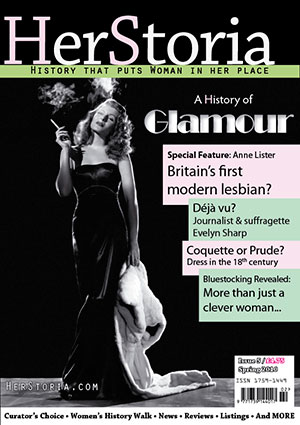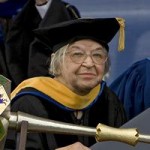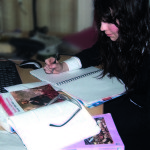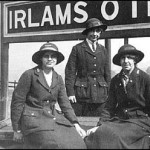Mary Somerville (1780-1872)
Mathematician, astronomer, translator
By Claire Jones
Context
Table of Contents
Science (or natural philosophy) was held as particularly unsuitable to women—a masculine enterprise threatening to woman’s femininity. This view reached a peak during the mid to late 19th century. Earlier, for a brief time, ladies were allowed to attend university lectures, for example at King’s College part of the new University of London, where Mary Somerville took her daughters to lectures in geology by Charles Lyell. However the Council of the College rescinded this privilege in 1832, even before the course of lectures had finished. Despite this, Mary Somerville became one of a number of women contributing to science and mathematics in the nineteenth century; what’s more, she managed to do so without provoking significant censure or a questioning of her femininity. She was recognised by herself and others as a ‘Gentlewoman of science’.
Early life
 Born Mary Fairfax in Scotland in December 1780, Mary’s father was an officer in the English navy; she spent most of her early childhood in Scotland with her mother in ‘genteel poverty’, receiving little formal education apart from a brief spell in a not very good girls’ boarding school. (Her elder brother went away to public school). She largely taught herself French, Latin and Greek. As a young teenager she discovered algebra while reading a ladies magazine (it was common for these magazines to contain mathematical puzzles for the ladies). The mysterious symbols aroused the young Mary’s interest and she set out to teach herself algebra and mathematics.
Born Mary Fairfax in Scotland in December 1780, Mary’s father was an officer in the English navy; she spent most of her early childhood in Scotland with her mother in ‘genteel poverty’, receiving little formal education apart from a brief spell in a not very good girls’ boarding school. (Her elder brother went away to public school). She largely taught herself French, Latin and Greek. As a young teenager she discovered algebra while reading a ladies magazine (it was common for these magazines to contain mathematical puzzles for the ladies). The mysterious symbols aroused the young Mary’s interest and she set out to teach herself algebra and mathematics.
However, typically for young girls, marriage was deemed more important than education and, in 1804, Mary married a cousin, Captain Samuel Grieg. He died just 3 years later, leaving Mary with one surviving son. She married William Somerville, another cousin, in 1812. Widowhood often gave women the opportunity and financial resources (largely unavailable to wives before the Married Women’s Property Acts) to pursue their own interests. Mary used this time to further her burgeoning passion for mathematics; luckily her new husband William fully supported her continuing to study. They lived initially in Edinburgh and London, and became connected with the eminent scientific circles of the day. (This marriage produced 3 daughters, and a son who died in infancy; her elder daughter Margaret died in 1823). Mary Somerville continued her private study, helped along by her contact with leading figures in science and mathematics.
Mary’s publications
Mary first became an author in 1826, publishing a paper in the Transactions of the Royal Society, publishing with them again in 1845. In 1831, she wrote her most successful book, an account of La Place’s groundbreaking astronomical work Mechanism of the Heavens, translating this from the French. But this was not only a translation of his work, she added notes, extensions and her own examples. Somerville won the acclaim of scholars at Cambridge and elsewhere for making La Place’s difficult, inaccessible mathematical thinking clearer, and ensuring that French advances in mathematical analysis and the application of the laws of gravity to astronomy became known in an England still adhering to Newtonian physics. This book was used as a resource and prime text for teaching mathematics students at Cambridge for one hundred years. Other works followed, all equally well received. William died in 1860; Mary responded to the loss by beginning another new book.
Mary’s strategy as a woman scientist

Mary Somerville
In their assessment of Mary Somerville’s life and accomplishments, contemporary reviews and obituaries were unanimous on one important point: that she had demonstrated the compatibility of high intellectual attainments in mathematics and science with feminine ideals. Somerville had been a prominent public figure for more than 40 years at the time of her death. This ability to demonstrate the compatibility of traditional womanhood with the pursuit of science was a key factor in Somerville’s rise to prominence. Somerville’s autobiography, written near the end of her long life, contains a much debated passage. She crossed out the last section (in italics) in a second version; this clearly shows that she was torn on the issue of women’s ability and reflects the ambivalences of the culture and society she came from. For Victorians, it would have been unwomanly for a woman to pretend to genius.
In the climax of my great success, the approbation of some of the first scientific men of the age and of the public in general I was highly gratified, but much less elated than might have been expected, for although I had recorded in a clear point of view some of the most refined and difficult analytical processes and astronomical discoveries, I was conscious that I had never made a discovery myself, that I had no originality. I have perseverance and intelligence but no genius, that spark from heaven is not granted to the sex, we are of the earth, earthy, whether high powers my be allotted to us in another state of existence God knows, original genius in science is hopeless in this.
Further, in the nineteenth century traditional womanhood was a sign of stability, and the association of science with stability was particularly important in an era in which almost everything seemed to be changing as a result of science and technology. The scientific enterprise was still in its early days and seeking status, acceptance and legitimation; these depended heavily on its ability to attract only respectable people to science, people who were conservative, not radicals. Somerville’s capacity to function as a symbol played a significant role in the acceptance she gained from the scientific elite. Through the course of her lifetime, gender roles became increasingly important for organising and stabilising social life. Somerville biographer Kathryn Neeley argues that ‘If she had challenged traditional feminine ideals, I believe she would never have achieved the stature she did. But there was a drawback to her acceptance of these ideals. As the reviews and obituary notices demonstrate, her conformity eventually became part of a powerful argument designed to exclude women from science’.
Mary’s strategy of ‘not rocking the boat’ is demonstrated by her diplomatic non attendance at the 1832 meeting of the British Association for the Advancement of Science. Mechanism of the Heavens had been published recently, establishing Somerville as one of the scientific elite, so on that account at least she may have been expected to attend. However, there was still ambivalence amongst the male scientific community, concerned that the presence of women ‘would turn the thing into a sort of…dilettanti meeting instead of a serious philosophical union of working men’. In the end she did not attend, but made no comment about it. Attending would have been a public, if not a confrontational act, and Somerville, at all times humble, preferred quiet persistence to confrontations. Neither did she let herself be linked to any ‘bluestocking’ label, a derisive term for women intellectuals. Somerville was traditional in that she held very deep religious beliefs and believed her science allowed her to appreciate and discover ‘god’s work’.
Somerville College, Oxford, is named after Mary Somerville.
Women’s work in science

Suffrage banner celibrating Mary Somerville
Somerville was often called ‘a distinguished cultivator of science’. She falls into a particular niche within science which was acceptable for women to pursue, that of being a writer or populariser of science. Women (and society) could be at ease with women in the feminine role of writers, teachers, disseminators, and popularisers of science; as such they were involved with science ‘second hand’, humbly translating the work of scientists for a lay audience. Other highly successful writers on science include Jane Marcet (author of Conversations on Chemistry), who was one of the nineteenth century’s foremost communicators in chemical science and part of Humphrey Davy and Michael Faraday’s illustrious intellectual circle.
Astronomer Agnes Mary Clerke, born in Ireland in the mid-nineteenth century, also achieved fame as author of A History of Astronomy during the Nineteenth Century. Through her quarter-century career, she became the leading commentator on astronomy and astrophysics in the English-speaking world.
Even Somerville’s writings could be represented as having profound implications for original scientific work, despite her own protestations. William Whewell famously coined the term ‘scientist’ in a review of her Connexion of the Physical Sciences. He considered there was ‘a sex in minds’. Women could not usually carry out intellectual work, according to Whewell, because in them ‘the powers of thought are less developed than the instincts of actions’.
Somerville was a friend and tutor of Augusta Ada Lady Lovelace (1815 – 1852), a mathematician who is associated with the early thinking that lay behind the invention of the computer.
Further reading:
Allan Chapman, Mary Somerville and the World of Science![]() , Canopus Publishing (2004)
, Canopus Publishing (2004)










Leave a Reply